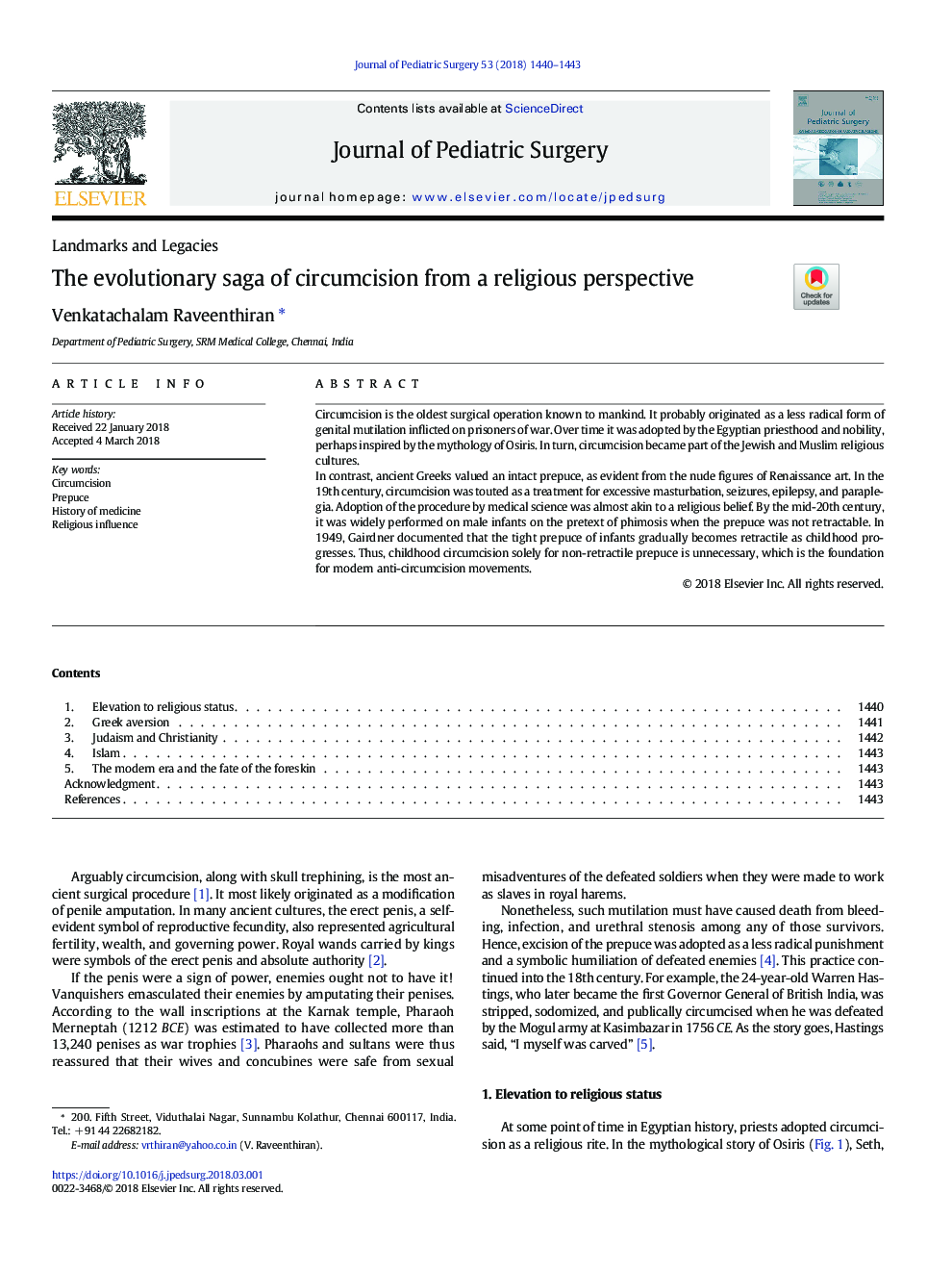| Article ID | Journal | Published Year | Pages | File Type |
|---|---|---|---|---|
| 8810198 | Journal of Pediatric Surgery | 2018 | 4 Pages |
Abstract
In contrast, ancient Greeks valued an intact prepuce, as evident from the nude figures of Renaissance art. In the 19th century, circumcision was touted as a treatment for excessive masturbation, seizures, epilepsy, and paraplegia. Adoption of the procedure by medical science was almost akin to a religious belief. By the mid-20th century, it was widely performed on male infants on the pretext of phimosis when the prepuce was not retractable. In 1949, Gairdner documented that the tight prepuce of infants gradually becomes retractile as childhood progresses. Thus, childhood circumcision solely for non-retractile prepuce is unnecessary, which is the foundation for modern anti-circumcision movements.
Related Topics
Health Sciences
Medicine and Dentistry
Perinatology, Pediatrics and Child Health
Authors
Venkatachalam Raveenthiran,
